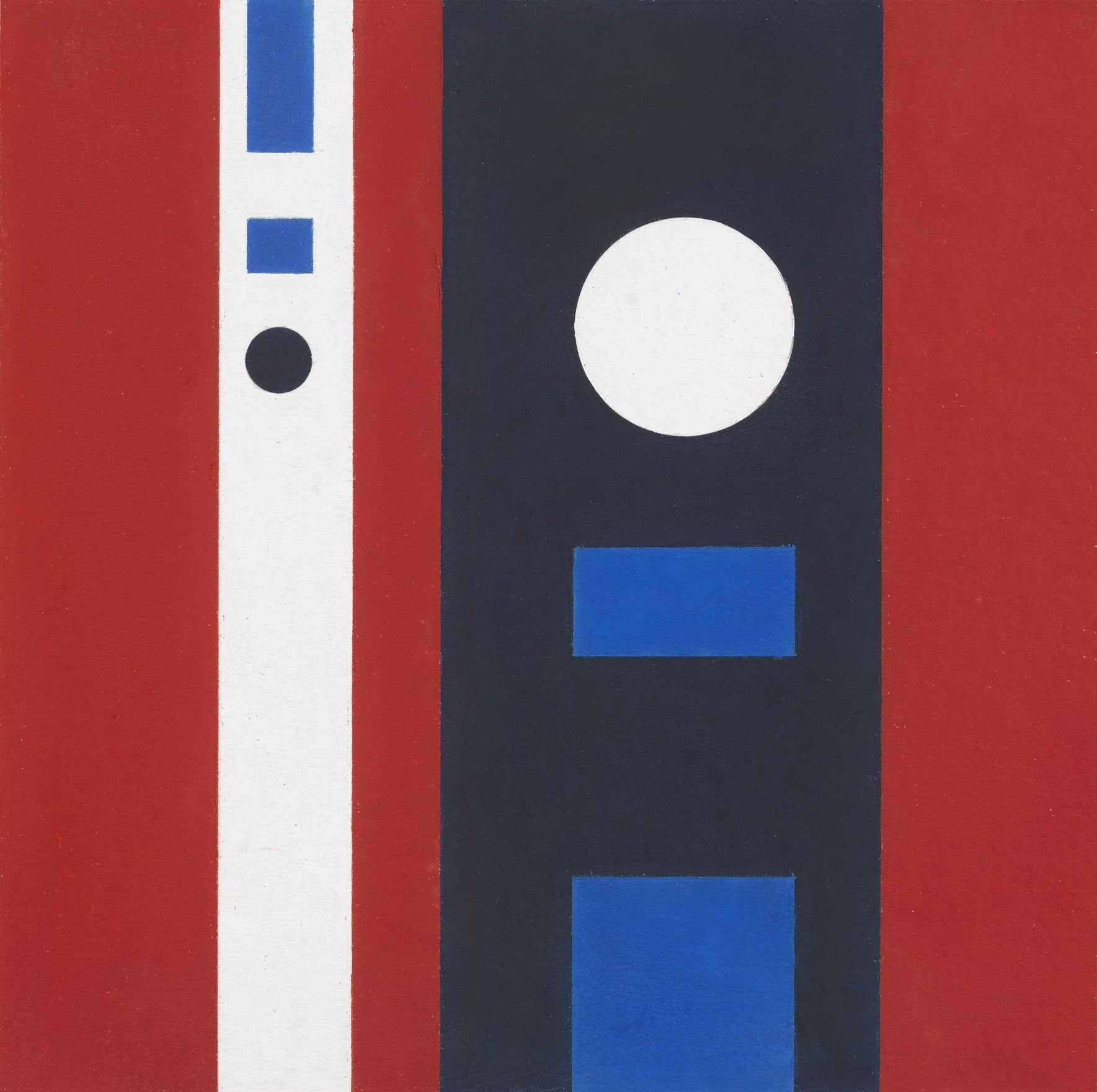
These days, the energetic artistic experimentation of Brazil in the 1960s is seen as one of the key moments of creative ferment of the 20th century. But just as, in pop music, the psychedelic innovations of late-’60s Tropicália drew from the earlier bossa nova explosion, the experiments of Brazilian art in that stormy countercultural decade were seeded in the 1950s.
Hence the interest of a show like Galerie Lelong’s just-opened tribute to Grupo Frente, claiming to be the first real US look at this group of Rio-based painters, which lasted from 1954 to 1956.
At Lelong, the arrayed ensemble of canvasses are full of quirky but carefully plotted geometries and color. Early works by future stars of Brazilian art, including Hélio Oiticica (1937–80), Lygia Clark (1920–1988), and Lygia Pape (1927–2004), sit with less well-known figures like Aluísio Carvão (1920-2001), Abraham Palatnik (b. 1928), and Décio Vieira (1922-1988).
Installation view of “Grupo Frente” at Galerie Lelong. Image courtesy Galerie Lelong.
Given how anything-goes contemporary art has become today, it is probably difficult to see, here, the drama these small paintings represented.
The abstract modern tendency Grupo Frente stood for was opposed not just to the more traditional painting styles or folkloric themes of Brazilian art, but also to the rival cluster of abstract artists in São Paulo, Grupo Ruptura. The latter were inspired by a more rationalistic abstraction, with associations to modern technology, seeing in pure geometry a metaphor for a more perfect, modernized world towards which this underdeveloped country was striving. Grupo Ruptura would vigorously denounce Grupo Frente as not rational enough.
For his part, Grupo Frente ringleader Ivan Serpa (1923-1973) was renowned for free-spirited educational workshops at Rio’s Museum of Modern Art. Both Rio and São Paulo had a wildly utopian investment in abstract painting as a cause. But Serpa’s emphasis, in the end, was on abstract art as a space that could open up free-thinking experiment rather than a way to access a set of purified rules.
“To not abandon the expressive dimension, while at the same time using an impersonal geometric vocabulary, seemed to be the challenge laid down by Serpa to his students,” writes Luiz Camillo Osorio in the Lelong catalogue.
At Lelong, Serpa’s own small series of gouaches show him varying the theme of black boxes interacting with thread-like lines, as if to give a sense of vibrating variation without a finally detectable pattern.
Ivan Serpa, Untitled (1953). Image courtesy Galerie Lelong.
“Professor Ivan Serpa does not ‘teach drawing,’ he ‘teaches children,’” the great Brazilian art critic Mario Pedrosa once said, approvingly, of the vibe in the workshops where the majority of Grupo Frente’s artists cut their teeth.
This process of unlearning would ultimately abet a process of questioning what art could be that would lead to huge, now-canonical experiments with art on a much bigger scale, from the likes of Clark and Oiticica, who went on to pioneer interactive installation, or Carvão and Palatnik, who went on to explore kinetic art. The sense of deliberated wonkiness in the geometry of Grupo Frente represents something like Brazilian art loosening its tie in preparation for more out-there experiments to come.
Do the mainly smallish works here stand on their own? It is true that in some ways they work best as prologue. But you can also see their modesty as part of their charm, giving a sense of artists carving out an intimate space where they might plot out how to break the patterns that ruled their day.
“Grupo Frente” is on view at Galerie Lelong & Co. in New York, through August 5, 2017.
Rubem Rudolf, Untitled (Study) (ca. 1950s). © Rubem Ludolf
Courtesy Galeria Berenice Arvani, São Paulo
Photo credit: Sergio Guerini.
Abraham Palatnik, Untitled (1956). © Abraham Palatnik
Courtesy the artist.
Aluísio Carvão, Untitled (ca. 1950s). © Aluísio Carvão.
Décio Vieira, Untitled (ca. 1950s). © Décio Vieira.
João José Costa, Untitled (1958). © Projeto Arquivo João José Costa, Rio de Janeiro
Courtesy Galeria Berenice Arvani, São Paulo
Photo credit: Sergio Guerini.